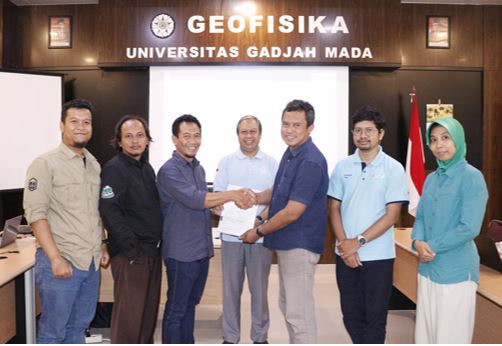
In the tapestry of Indonesia’s abundant natural resources, hydrocarbons stand out as a potential wealth waiting to be unlocked through exploration. The pursuit of hydrocarbons, nestled beneath the Earth’s surface, encounters many challenges that necessitate cutting-edge detection techniques.
Dr. Wiwit Suryanto, the Vice Dean for Research and Community Service at the UGM Faculty of Mathematics and Natural Sciences, shed light on the significance of specific measurement techniques, especially the electromagnetic method in geophysics, to unveil the concealed hydrocarbon treasures.
This method, boasting the prowess to record electric and magnetic fields, decodes the resistivity values of rock layers beneath the Earth’s surface.
“The contrast in resistivity is harnessed to pinpoint the presence of hydrocarbon layers,” explained Dr. Suryanto on Wednesday (Nov. 29).
The Controlled Source Electromagnetic (CSEM) method takes center stage in the arsenal of the UGM Geophysics Laboratory.
In a collaborative venture with Upstream Innovation at Pertamina Hulu Energi, the Geophysics Laboratory embarked on a joint exploration called “Controlled Source Electromagnetic Study to Detect Hydrocarbon Reservoirs.”
This collaborative study unfolded over an impressive nine-month span from April to November 2023.
The crescendo of this collaborative symphony transpired on November 27-28, 2023, at the Geophysics Laboratory, Department of Physics, Faculty of Mathematics and Natural Sciences, UGM.
The finale, attended by representatives from Upstream Innovation—Freddy Yulisasongko, Boko Nurdiyanto, and Isnianto Saputra from JOB PMEP Simenggaris—marked the unveiling of the joint study’s final report.
The UGM Geophysics contingent included three lecturers: Dr. Wahyudi, Dr. Wiwit Suryanto, and Dr. Sintia Windhi Niasari, accompanied by the research team from the Geophysics Laboratory.
As a torchbearer of scientific inquiry, Dr. Suryanto emphasized that the culmination of this study signifies not the conclusion but a stepping stone in the expansive realm of electromagnetic method research and its pivotal role in hydrocarbon detection.
The trajectory of this study is envisioned to catalyze advancements in geophysical research, rendering a positive contribution to the utilization of Indonesia’s natural resources.
Echoing a resonant sentiment, Freddy Yulisasongko from Upstream Innovation conveyed gratitude to the entire team, underscoring the positive signals emanating from the method’s application.
“Thank you to the entire team for the collaboration,” he acknowledged.
Authors: Shofi Rahmadini and Agung Nugroho
Photo: Shofi Rahmadini

